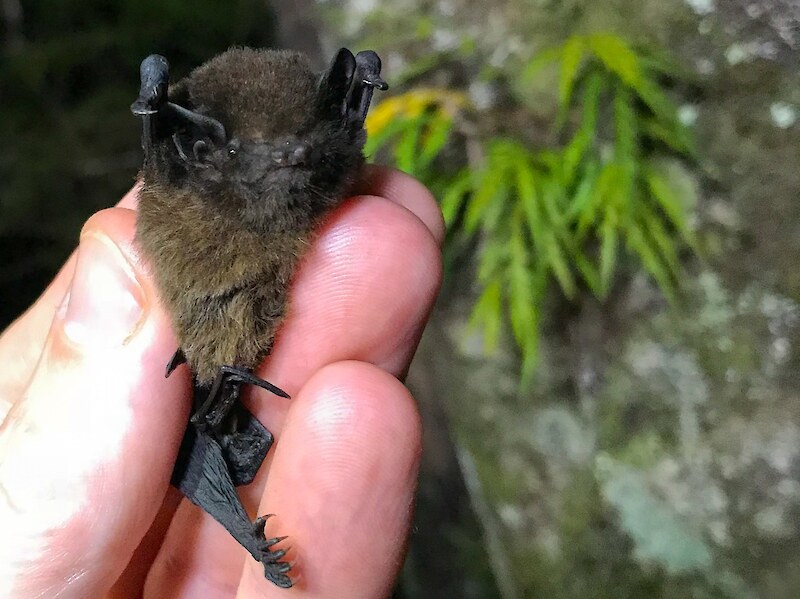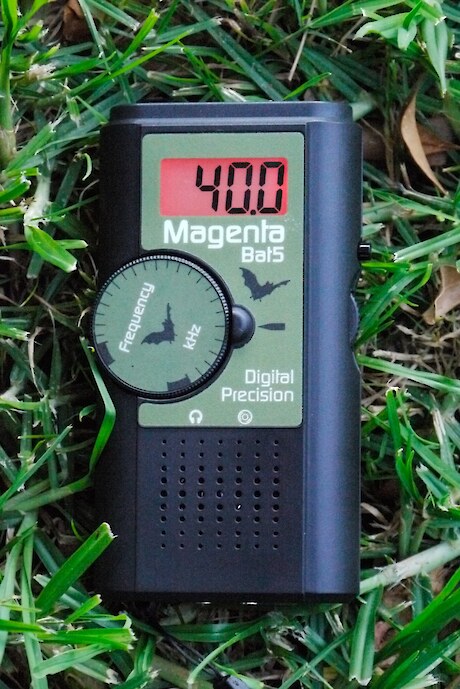 New Zealand long-tailed bats (pekapeka tou roa; Chalinolobus tuberculatus) are found in the Waitākere Ranges and as close as Henderson, but we’re not sure if bats can still be found in Auckland’s inner west.
New Zealand long-tailed bats (pekapeka tou roa; Chalinolobus tuberculatus) are found in the Waitākere Ranges and as close as Henderson, but we’re not sure if bats can still be found in Auckland’s inner west.
We’d love to hear from you if think you’ve seen or heard them. Bats feed on moths, midges, and flying insects at dawn and dusk and help with pollination of native species. In fact, bats are a great indicator species as they are sensitive to all sorts of threats:
- Mammalian predators Reducing the number of rats, stoats and possums really makes life easier for bats. Feral cats are also an issue, and even domestic cats are best kept in from dusk until dawn.
- Forest fragmentation Bats need forested corridors along which to travel. These should be planned into urban designs.
- Loss of habitat Bats nest in holes in old trees and like species with loose bark. To encourage bats we need to hang onto old trees, even exotics like gums, willows, macrocarpa and pines.
Detecting bats
 One of the best ways to detect bats is to borrow a bat detector from Auckland Council. Bats use echolocation to detect their insect prey, but the frequency is too high for human ears. Bat detectors bring that frequency down to clicks and buzzes we can hear. Email [Enable JavaScript to view protected content] or call the main council number (09 301 0101) to organise your free bat detector.
One of the best ways to detect bats is to borrow a bat detector from Auckland Council. Bats use echolocation to detect their insect prey, but the frequency is too high for human ears. Bat detectors bring that frequency down to clicks and buzzes we can hear. Email [Enable JavaScript to view protected content] or call the main council number (09 301 0101) to organise your free bat detector.
Over the past few years Urban Ark has run a number of of bat walks. We headed out at dusk on warm evenings following streams and forest margins, focusing on areas where there are mature trees (good for roosts) and fresh water. These we excellent opportunities to listen for rūrū (morepork), spot eels and native fish in the streams, and generally enjoy an evening stroll through some of the bushier parts of the inner west.Unfortunately, no bats were detected on any of our walks, but we are hopeful that continued efforts to control predators and improve our native vegetation will eventually bring pekapeka back to central Tāmaki Makaurau. So far we’ve explored:
- Chamberlain Park fringe along Waitītiko / Meola Creek
- Western Springs Park and Bullock Track Bush
- Jaggers Bush and Lower Waitītiko / Meola Creek
- Oakley Creek / Te Auaunga from the railway to the sea.
- Auckland Domain
- Gribblehirst Park
Resources
- Auckland Council produce and informative Long-Tailed Bat fact sheet (PDF, 3.45 MB).
- Community Waitākere have a lovely bat poster.
- Kids Greening Taupo have an excellent bat webpage for our younger pekapeka fans.
- Friend of Urban Ark and Senior Conservation Advisor at Auckland Council, Ben Paris, is NZ batman. Follow him on Facebook.
